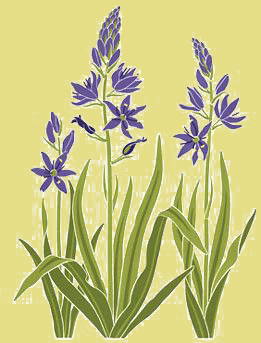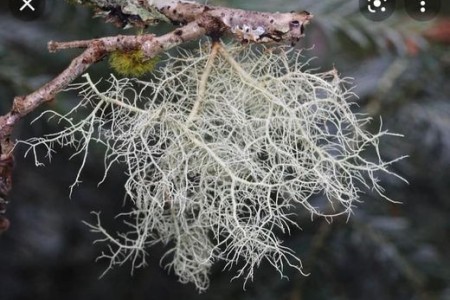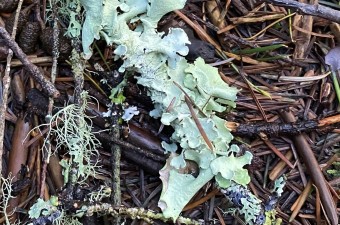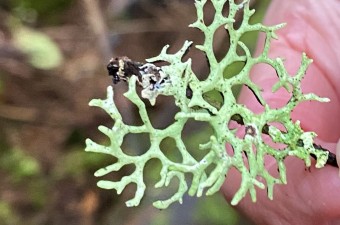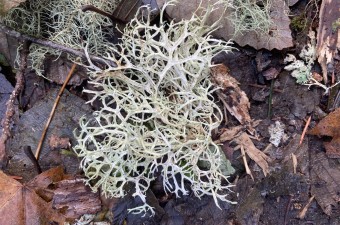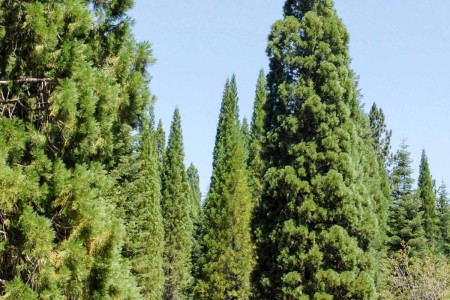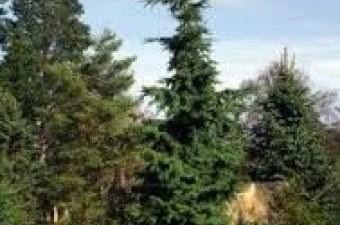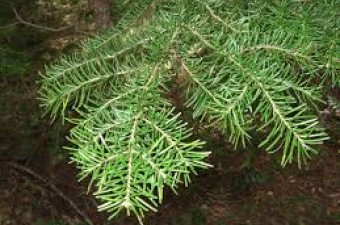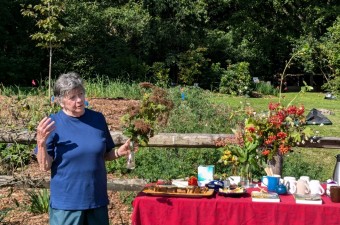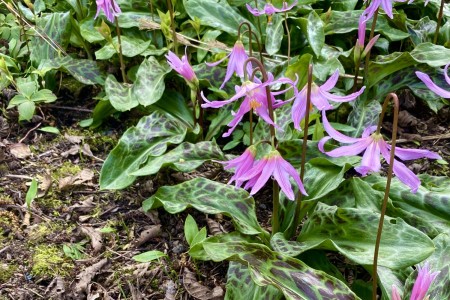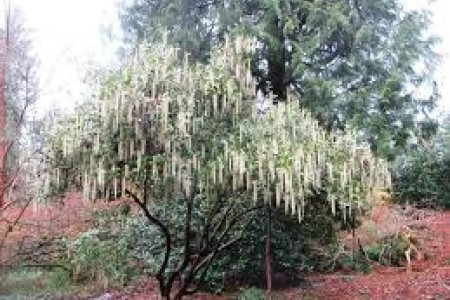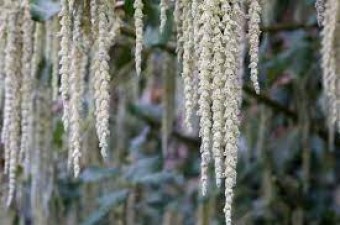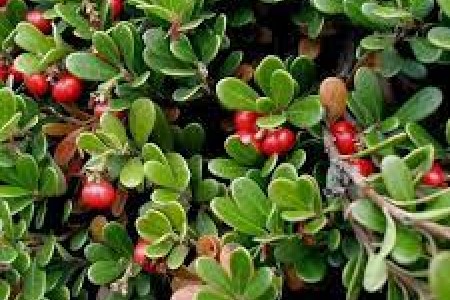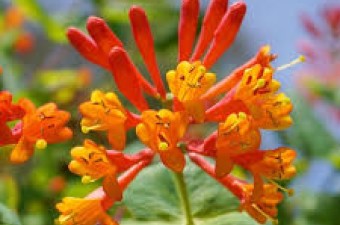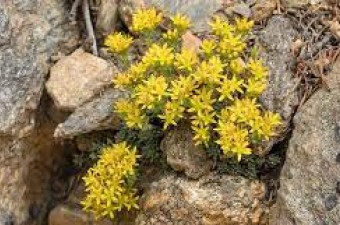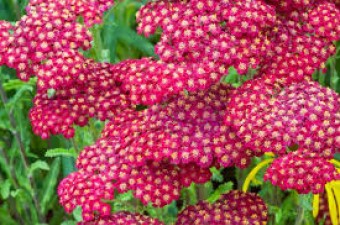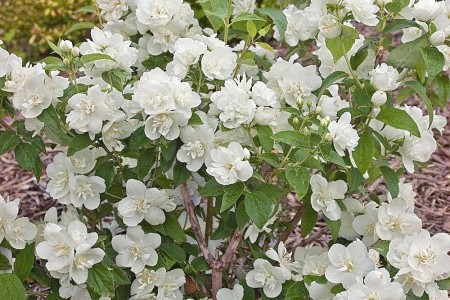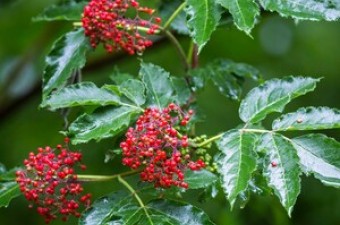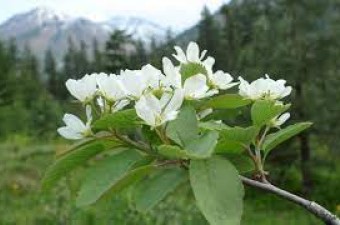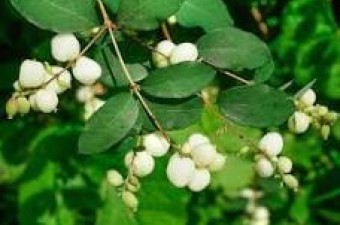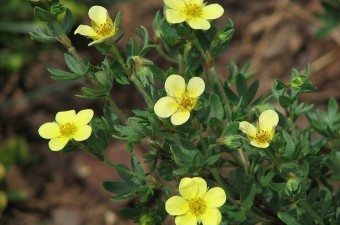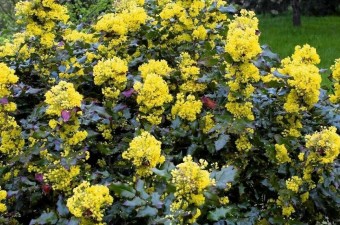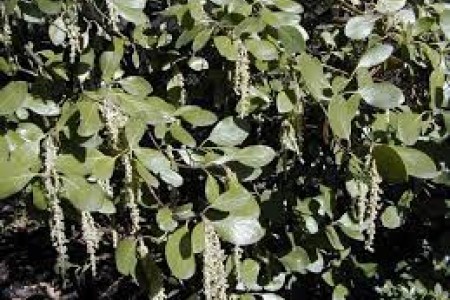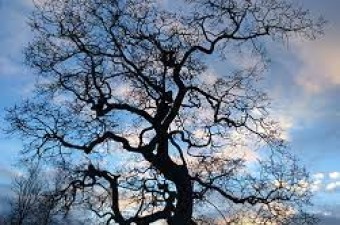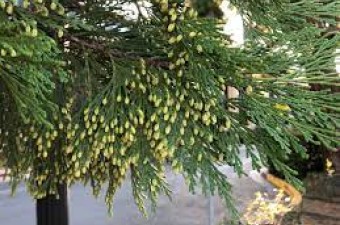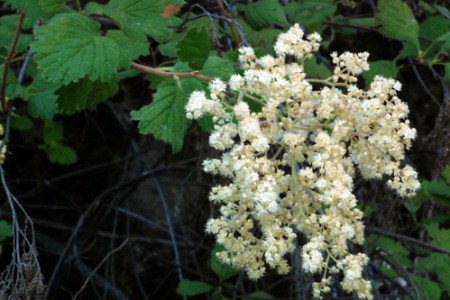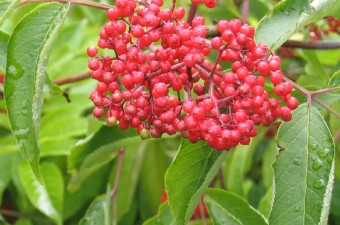If you’re walking in the woods this winter, pay attention to the gray-green stuff that grows on trees, logs, and rocks. A lichen basically consists of the symbiotic partnership of two (or more) separate organisms—usually algae and fungi. The algal partner photosynthesizes carbs for the fungus, and in turn the fungus gives a structure to the alga. Lichens clean our air, and they provide habitat and food for creatures big and small. The Pacific Northwest has over 1,000 species.
They’re widely used in medicines both commercial and traditional. For example, usnea or “old man’s beard,” which has powerful antimicrobial properties, is used in Tribal medicine to treat lungs, intestines, throat, and sinuses. Make a tincture for when you get a bad cold. You can tell it’s usnea by the elastic white inner core of the branches. Lichens are extremely slow growing, so don’t pick them off trees, logs, or rocks--you can forage plenty of windblown lichens from the ground.
The photos here show four common lichens of our area. From top to bottom, they are: Usnea, ragbag lichen (Platismatia glauca), Hypogymnia, and oakmoss or 'antlered perfume' (Evernia prunastri).
Hansville Log Articles
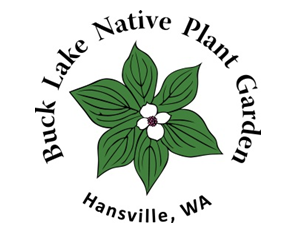 Buck Lake Garden articles published in the monthly Hansville Log highlight seasonal activity in the garden.
Buck Lake Garden articles published in the monthly Hansville Log highlight seasonal activity in the garden.
We Are Lichen This!
Consider a Native Conifer
What can an individual person possibly do about climate change?
Aside from voting, contributing to environmental groups, and engaging in activism to prevent senseless mowing down of our region’s precious forests, you can, as Voltaire’s Candide liked to say, “tend your own garden.” A good way to start: plant more trees. Consider a native conifer to contribute to the tree canopy, protect wildlife, and add beauty to the landscape.
Mountain hemlock (Tsuga mertensiana) is an elegant and graceful evergreen (which differs from Western hemlock, T. heterophylla, by its needle arrangement). Its cones provide food for numerous bird species as well as squirrels. Its relatively narrow, upright, and asymmetrical habit and its silvery, blue-green needles growing on slightly drooping branches make it a natural for a garden focal point. While mountain hemlock can reach heights of 60 feet or more in its native mountain habitat, it is slow growing and much smaller in lowland gardens, reaching only 20 - 30 feet and staying quite narrow. It is not very tolerant of heat and drought, though, preferring moist, cool, organic soils in sun or light shade.
Incense cedar (Calocedrus decurrens) isn’t well known in our region, but it’s well suited to our increasingly warm summers. Incense cedar has the great advantage of being heat- and drought-resistant, particularly if it’s given deep, infrequent watering when young. This stately tree grows in the shape of a narrow cone. Its aromatic wood repels mosquitoes, moths, rats and mice. Plant one for the long haul!
Both trees can be seen in the Buck Lake Native Plant Garden. Plan to drop by any time in December—the garden is always open and free to the public.
[Info on mountain hemlock comes from Cindy Spurgeon’s article “Mountain Hemlock for Lowland Gardens” on WA Native Plant Society (WNPS) website.]
PHOTOS - Top: incense cedar. Lower two: mountain hemlock & foliage.
Shrubs for Winter Interest
If you’re seeking something to give visual pleasure to your garden in the long cold months ahead, consider these native evergreen shrubs.
Two very early-blooming plants are silktassel (Garrya elliptica) and manzanita (Arctostaphylos). Silktassel’s showy cascading flowers start out in the fall and through the winter as firm catkins. Drought-tolerant manzanita has winter blooms and summer berries—it’s a pollinator and wildlife all-star, supporting native birds and insects.
For spring flowering: Wax myrtle (Morella californica) has shiny dark-green leaves through the year. The one in the Buck Lake garden grows tall and happy; Its dried berries in fall and winter look like peppercorns. Tall Oregon grape (Mahonia aquifolium), a classic native of our area, has bright yellow flowers in spring and the leaves partly turn red in cold weather. Evergreen huckleberry (Vaccinium ovatum) also has beautiful foliage and lovely dark berries.
All beautiful shapes and colors for winter!
Mary Booth and Claudia Gorbman
Garden Leaders
As another summer season closes at the Buck Lake Native Plant Garden, let’s pause and thank the garden’s prime movers, Sheri Kiley and Mary Booth. The BLNPG was born in 2006 when the late Rol Malan envisioned turning two acres of land formerly used for a BMX bike track into a demonstration garden. With creative foresight plus large infusions of good soil, love, and volunteers, it has matured into a beautiful showcase for Northwest native perennials, shrubs, and trees. Displaying about 250 species in a variety of habitats, the garden offers a pleasurable stroll, and also provides great ideas about ways to incorporate native plants into home gardens.
Here’s an invitation to come to our last work party of the year, Monday October 17 from 9 to 12. You can see what fun it is and decide whether to become a more active volunteer for 2025. Mary and Sheri will suggest a job for you--probably weeding or planting, along with other folks who help newbies get the hang of it. Break time comes when everyone’s energy begins to ebb; over refreshments, Mary gives the group a casual botany/horticulture lesson on a seasonally relevant topic. For example, having grabbed some bright red berries from the garden’s high-bush cranberry or a cluster of blue ones from the Oregon grape, she might do a show & tell about collecting and storing those seeds over the winter. Sheri comments and helps answer our questions (Can we plant this right now, or wait until early spring? Is a hybrid really “native”? Which insects pollinate plant X?).
Both Mary and Sheri lead with legendary generosity and indefatigable energy. It’s a big enterprise to maintain this jewel of a garden, free and open to the public. No matter how idiotic our questions, they graciously encourage us and teach us so much. Their vision continues to guide the growth of this spectacular place. Huge gratitude to both.
Remember in these troubled times: few activities keep you as sane as getting your hands in the dirt and doing something for the common good. Come join the work party on October 17!
Photos: top - Sheri Kiley; bottom: Mary Booth
For more on the BLNPG, see our website at www.bucklakegarden.com and find us on Facebook.
Oregon Grape
Oregon grape (Mahonia aquifolium and Mahonia nervosa, the genus also named Berberis), which grows plentifully in our northwest forests, might not seem like a natural for home gardens. But as we’re constantly reminded, it’s smart to go with more native plants: they’re best adapted to our climate, and native bees and butterflies are programmed to use them for habitat and food. If your garden needs a hedge, instead of planting laurel or arbor vitae that will grow too tall and wide, do this: “arrange tall Oregon grape in an imperfect line—it not only needs little pruning, it’s an overachiever when it comes to providing berries and blossoms for our feathered friends and pollinators.” (Stark, Real Gardens Grow Natives).
Oregon grape has branches and bark that are yellow inside, and pointy-edged leaflets like holly (but not as prickly, and certainly not invasive). Its two main species are tall Oregon grape (M. aquifolium), which can grow to 4 - 6 feet, and dwarf or dull Oregon grape (M. nervosa), to 2 feet. Be advised that “tall” and “dwarf” don’t always suffice to distinguish them. Leaf structure helps, however: tall O.g. has 5 to 9 leaflets per leaf that are glossier than those of dwarf O.g., which has up to 19 leaflets. Both varieties sport bright yellow flowers in spring, ripening into clusters of dusty dark-blue berries, which have been especially plentiful this year.
The berries are edible yet quite tart, so indigenous people mixed them with salal berries. Today, you can make Oregon grape jelly, using 2 cups Oregon-grape juice, 2 cups salal juice, 5 cups sugar, and one box pectin crystals. Indigenous people used the shredded bark of stems and roots to make a yellow dye for baskets. The bark and berries also served as medicine; O.g. speeds the healing of intestinal infections and acts mainly on the liver, skin, and digestion. But it was used with caution, as the alkaloid berberine (responsible for its yellow color) is toxic in bigger doses.
For more on medicinal uses of Northwest plants, consult the excellent book by Scott Kloos, Pacific Northwest Medicinal Plants (Timber Press, 2017).
Evergreen Native Groundcovers
Native plants offer plenty of good possibilities for groundcovers you can cultivate at the edge of a garden bed or woodland path. Here are a few evergreen choices.
For locations that get full sun, consider Oregon stonecrop (Sedum oreganum) and broadleaf stonecrop (Sedum spathulifolium). These ground-hugging evergreen perennials thrive in the Northwest, and form a beautiful succulent carpet. S. oreganum turns reddish as summer advances. Yellow starry flowers spring up from both varieties, beckoning area bees and butterflies.
Also for sun, there’s the iconic kinnikinnick (Arctostaphylos uva-ursi), and who doesn’t like to say kinnikinnick? A low-creeping shrub seldom more than 6 inches high, kinnikinnick (aka bearberry) has paddle-shaped leaves and clusters of pinkish-white flowers followed by bright red berries. Spreads slowly, worth the wait.
For shade evergreens: first, there’s Brewer’s miterwort (Mitella breweri). Mitella has become a favorite for bordering paths in the Buck Lake Native Plant Garden. It prefers good soil and grows to 3”, and sends up a thin “flower” spike in spring. If you want to curb its spread, just cut off the spikes before they disperse their seeds.
Or consider goldthread (Coptis laciniata and C. aspleniifolia). In the wild, Coptis grows in wet understory habitats. Its leaves look somewhat like those of buttercups, with a stemlike inflorescence of lovely lacy filaments.
Finally, there’s the lush false lily of the valley (Maianthemum dilatatum) (as distinct from nonnative, toxic lily of the valley). Each 3-4” stem bears two broad heart-shaped leaves and a spiky cluster of tiny white flowers, then red berries. The plant develops an extensive underground root system and spreads readily given the right shady conditions.
Attract Butterflies with Native Plants
Native plants are essential to the majority of the roughly 160 butterfly species (Lepidoptera) that occur in Washington State. A definitive list of plants used by larvae (butterflies in their caterpillar stage) and adults, is available at https://wabutterflyassoc.org/wp-content/uploads/2020/09/Butterflies-and-... .
Butterflies don’t just need food to survive and reproduce. They also need host plants for laying eggs, plants for their larvae to eat, and protection during winter. Trees tend to be most important, but many butterflies rely on wildflowers, grasses, and shrubs as hosts for their larval phase. Some, like monarchs and red admirals, can use only a single species. For example, monarch caterpillars require milkweed as their host plants; red admirals and the Satyr comma lay their eggs only on stinging nettles. Washington’s three spectacular Tiger Swallowtail species use chokecherry, Ceanothus, oceanspray, serviceberry, willows, and maples as caterpillar host plants.
Flying requires lots of energy, so butterflies must locate high-energy food sources such as nectar-producing flowers. A wide variety of flowers, including many popular garden and landscape plants, can provide their nectar. Brightly-colored, fragrant plants are particularly attractive. Plants with flower heads that contain small multiple florets, such as those found on asters, furnish convenient landing pads, allowing butterflies to rest and sip nectar and do some pollinating in the bargain.
Some ornamental flowering plants have been hybridized to produce showy flowers. Unfortunately, these hybrids may not be good sources of nectar, so make sure to go native if you want to be a good host to butterflies.
Make a butterfly puddle in your garden, consisting of sand (to which you can add compost) with indentations for water. Your puddle can be in the ground or in a dish or shallow bowl, and should be in direct sunlight, preferably near flowers. Butterflies will appreciate this rest stop for the liquid and minerals they need.
Devil's club
Some native plants are so particular that they rarely adapt to the efforts of gardeners. One example of a species that resists living in captivity is Devil’s club (Opoplanax horridus).
Devil’s club is usually found growing in Northwest forests next to streams in part shade. It’s a fearsome creature, covered in sharp thorns, frankly prehistoric-looking, with gangly stalks that can reach ten feet in height, and with large palmate leaves topped by pyramid-shaped green flowers that form into cones of red berries in summer.
Coast Salish people consider Devil’s club sacred; they’ve used it since time immemorial for medicine, drumsticks and walking sticks, beads, and spiritual protection. Pieces of dried stalk, wrapped in red cloth and attached above doors and windows, are said to keep harm away. Compounds in the inner bark are antimicrobial and antifungal; when topically applied as a salve, Devil’s club treats ailments including arthritis and eczema. The plant’s therapeutic uses have not been confirmed by medical science; and especially when taken internally it may be harmful to some people. Remember: it’s strong medicine. With its prickly self-protection and healing powers, it deserves greatest respect.
If you plant Devil’s club at the fringes of your garden, make sure it’s located next to fresh water. Slugs love Devil’s club, completely unfazed by its thorns; be ready to deal with them or they will obliterate the plant!
Take a walk in the woods with the Kitsap County Native Plants group (find them on Facebook) to see the wonders of native plants in our area that proudly resist human cultivation.
The Beautiful Dogwood Family
Our Pacific dogwood (Cornus nuttallii) has just about finished blooming, but what a year it’s been for their splendid flowers! The dogwood family comes in all sizes, from tree to shrub to groundcover, and you can see them in the Buck Lake Native Plant Garden. Why not plant a native Cornus in your own garden?
Naturally-occurring Pacific dogwood trees are susceptible to a fungus aptly named Discula destructiva. But two recent cultivars of C. nuttallii are much less vulnerable to disease. The BLNPG has a dazzling “Eddie’s White Wonder,” heartily recommended for your garden. Another variety is the “Venus” dogwood, a cross between native C. nuttallii and C. kousa. Its flowers can grow up to six inches across. (With Mother’s Day coming up, either would make a great gift.) Dogwood isn’t normally happy in full sun, especially the hot summer sun we’ve been getting--light shade preferred.
Skipping over the dogwood shrubs (more on them in a future report), the smallest version of Cornus native to our area is bunchberry (C. canadensis, 6-8” tall), which makes a charming groundcover in a woodland garden. Bunchberry’s white blossoms in spring and bright red berries in late summer can lay a blanket of color onto a corner of your garden, and you can pick berries and pop them in your mouth on the spot.
Like red huckleberry, which tends to grow out of old tree stumps, bunchberry thrives in the company of rotting wood. Include a piece or two of decaying wood at the bottom of your planting hole. Bunchberry requires acidic, well-drained moist soil, and mostly shade (but some sun in order to bloom).
For more info on the Buck Lake Native Plant Garden, visit www.bucklakegarden.com or check us out on Facebook. The garden is always open and free to the public. Better yet, come volunteer at work parties, every 1st and 3rd Monday morning, 9-12.
April is Native Plant Appreciation Month
April is Native Plant Appreciation Month--and so much is happening! Here’s a list of ways to participate.
1. It’s a beautiful time to stroll through the Native Plant Garden. Everything is wildly blooming.
--The next work party in the BLNPG is Monday April 15, 9 – 12. Bring gardening gloves. (Warning: the work parties are addictive.) There’s something to do for folks of every age and fitness level.
-- April 17, 1 – 4 pm: Guided walk through the Garden, plus Trillium Forest hike thru the Hansville Greenway. Co-sponsored by WNPS & Kitsap County Native Plants group. Preregister: email kommer2010@outlook.com .
2. WNPS (Washington Native Plant Society) has many April events, both in-person and on Zoom, including field trips and talks. A sample of their many recorded webinars available: “Landscaping with Native Plants,” “Resilient Gardens for Uncertain Futures,” “Washington’s Bumblebees and other Native Pollinators”… Visit their website, wnps.org.
3. Kitsap County Native Plants is a year-old group (on Facebook) with boundless enthusiasm, congeniality, and knowledge. Join one of their frequent rambles to ogle Kitsap’s rich biodiversity. Open to all.
4. If you’re in or near Poulsbo, check out Poulsbo’s Fish Park (info page on Facebook). April 20: Earth Day in the park, 10 – 2! Events for the family, celebration of Mother Earth and also Fish Park’s 20th birthday.
5. The Kitsap Great Give is April 16. Donate to your favorite Kitsap nonprofits, and make your money go farther because of matching funds. Please consider including the Buck Lake Native Plant Garden in your generosity. https://www.kitsapgreatgive.org/giving-events/kgg24
6. Finally, download a plant identification app to your smartphone. One of our favorites is PictureThis—you just go into the app, snap a picture of an unknown plant you encounter, and it identifies the plant and gives info about it. Many local nature groups use another great app, iNaturalist, which allows sharing and inventories of species.
Silktassel
Our recent freezing weather provides an opportunity to replace lost plants with new native plants. Select plants that are zone hardy and match the existing conditions of your specific site. Give consideration to plants that are drought tolerant, summer heat tolerant, pollinator friendly, and bearing attractive flowers and/or fruit.
A terrific one to consider is silktassel (Garrya), not yet very common in our area. It’s a broadleaf evergreen with leathery ovoid leaves, growing to 4-8 feet, and is a very early bloomer, producing long catkins of tiny flowers starting in January. Silktassel is a handsome addition to your garden: its pendant catkins are uniquely cool; it’s well suited to our changing climate, and grows in full sun to part shade. G. elliptica’s leaves have wavy edges, while G. fremontii’s leaves and catkins are smaller (but it grows taller). G. fremontii sprouts after fire and other disturbances, and is more drought-tolerant than elliptica. You can find two G. elliptica in the Buck Lake Native Plant Garden.
Silktassel is dioecious, meaning plants are either male or female. Plants of both sexes must be present for female plants to be pollinated and to fruit. The fruits come in purple berrylike clusters in the summer. Eilleen Stark (Real Gardens Grow Natives, 2014) writes that its “fruits may be eaten by birds such as robins and towhees, and mammals such as grey foxes. Sprouts are browsed by deer. Provides evergreen cover for various birds and mammals, especially during winter.”
Interested in learning more about gardening with native plants? Come join a work party in the BLNPG, held every first and third Monday from 9am-12 starting in April. Visit the website at www.bucklakegarden.com or check us out on Facebook.
Drought-tolerant Natives for Our Evolving Climate - III
Now that we’ve entered the cold, damp time of year, it may be a stretch to recall how hot and dry our summers have become and to help your garden accommodate to that reality—but now is the time to plan for more drought-tolerant natives and attracting pollinators.
We’ve already listed some favorite trees and shrubs; this month we suggest other plants. Remember, you can view all of these in the Buck Lake Native Plant Garden. Info comes from Eileen Stark’s Real Gardens Grow Natives (Mountaineers, 2014).
Kinnikinnick (Arctostaphylos uva-ursi): evergreen ground cover with small, paddle-shaped leaves. Stems root where they touch the ground. Spreads slowly. Urn-shaped flowers in spring, bright red berries persist into winter.
Media manzanita is a hybrid between kinnikinnick and hairy manzanita, about a foot tall.
Orange honeysuckle (Lonicera ciliosa): vine with spectacular orange-yellow flowers, popular with hummingbirds, bees, butterflies, and us! Wonderful in gardens, weaving through shrubs or growing up a trellis or fence.
Stonecrop (Sedum oreganum): succulent ground cover, leaves vary in color. Yellow flowers burst forth in summer.
Yarrow (Achillea millefolium): this native perennial blooms throughout summer and is a favorite of pollinators—and one of ours too. In nature, flowers are white; hybrids come in delicious colors—salmon, paprika, red wine…
Photos, in order: Kinnikinnick, orange honeysuckle, stonecrop, one of the magnificent colors of hybrid yarrow.
Drought-Tolerant Natives for Our Evolving Climate - II
Here is the second part of a three-part article about the changing climate, the evolving definition of “native” plants, and how to adapt your garden to drier and hotter conditions. We've already listed some native trees that will do well—Douglas fir, Garry oak, incense cedar, and madrona, and we identified some drought-tolerant native shrubs: manzanita, ocean spray, salal, and silktassel.
Here are more shrubs to consider. Remember, plants listed here can be seen in the Buck Lake Native Plant Garden—come visit to get ideas. All these native shrubs are host to pollinators and birds. Info taken from Eileen Stark’s Real Gardens Grow Natives (Mountaineers, 2014). In part III, watch for a list of drought-tolerant ground covers and other plants.
Mock orange (Philadelphus lewisii) -- Deciduous, with sweetly fragrant showy white flowers.
Red elderberry (Sambucus racemosa) – Lacy creamy flowers bloom spring to summer, followed by beautiful clusters of red berries (not for eating).
Serviceberry (Amelanchier alnifolia) Bluish-green leaves turn yellow to red in fall; feathery white flowers are followed by tasty blueberry-like fruit relished by wildlife and humans.
Snowberry (Symphoricarpos albus) has tiny pink flowers, then produces white berries (not edible, but pretty) that remain on the bush through the winter.
Shrubby cinquefoil (Dasiphora fruiticosa, formerly Potentilla) One of our favorites because its bright yellow flowers bloom all summer. Lovely addition to any garden.
Tall Oregon grape (Mahonia aquifolium) A Northwest icon, with its shiny spiked leaves. Enjoy striking yellow flowers in spring, and then eat its deep-blue berries in summer.
(Photos below, in order: mock orange, red elderberry, serviceberry, snowberry, shrubby cinquefoil, tall Oregon grape.)
Drought-Tolerant Natives for Our Evolving Climate (I)
North Kitsap’s forests and gardens are drier than ever this summer, and climatologists are predicting this climate will prevail from now on. So it makes sense to rethink your garden (if you haven’t already done so) for drought tolerance. Given the Northwest’s traditional weather, are there native plants and trees that can adapt to the changing conditions?
Yes. But first, reconsider what constitutes “native.” Even in our lifetimes, warmer and drier conditions are altering Western Washington’s ecosystem, and the plants are responding. Hemlock trees are dying out; red cedar and others will follow. Many plants and trees are finding it easier to survive by migrating northward to Canada. In turn, many other species are moving up this way from California. It’s time to expand the notion of “native” to include species from farther south which are establishing themselves here.
Most of the trees and shrubs listed below can be seen in the Buck Lake Native Plant Garden. Consider them for your own garden. Unless otherwise noted, these grow in full sun to light shade. All are host to pollinators and birds. Info taken from Eileen Stark’s invaluable book, Real Gardens Grow Natives (Mountaineers, 2014). Next month, we’ll describe additional shrubs and other drought-tolerant plants.
Drought-tolerant TREES:
Douglas Fir (pseudotsuga menziesii), the iconic NW evergreen, prefers our traditional cool climate but can adapt to dry warm conditions. Hosts to many mammals and birds. Sun to partial shade.
Garry Oak (Quercus garryana), our only native oak. Slow-growing, reaches about 25 feet in 20 years, can grow to about 50 feet.
Incense cedar (Calocedrus decurrens), tall, aromatic, and handsome evergreen, named for the odor released when its leaves are damaged. More heat- and drought- tolerant than Western red cedar.
Madrona (Arbutus menziesii), deciduous broadleaf evergreen tree with dense wood and thin orange bark. Fragrant white flowers in spring. “Endearing, spectacular wildlife magnet.” One drawback to consider: it’s messy, sheds leaves and bark at various times during the year.
Some drought-tolerant SHRUBS:
Manzanita (Arctostaphylos), attractive, slow-growing evergreen shrub, with grayish-green, thick hairy leaves. Matures to 5-7 feet tall.
Oceanspray (Holodiscus discolor), versatile deciduous shrub that blooms for a long period and is especially important for butterflies. Oceanspray’s fabulous creamy-white flowers are visible along the Hansville Road in spring and into summer.
Salal (Gaultheria shallon), low evergreen shrub, prefers partial shade. Has small rounded bell-like small flowers in rows, followed by fruit that resembles blueberries (but not as tasty). Grows 3-4 ft tall, and spreads easily but is also easily tamed back. A haven for butterflies, bees, many other insects and birds.
Silktassel (Garrya fremontii) (not elliptica). Attractive shrub with glossy evergreen leaves, grows to 8-10 feet. The long, pendant catkins begin their graceful show in winter when nothing else is blooming.
Volunteering in the Buck Lake Native Plant Garden is an ideal way to broaden your knowledge and contribute to the beautiful Hansville community! Work parties are every 1st and 3rd Monday thru October, 9-12--you’re so welcome and appreciated. Visit our website: www.bucklakegarden.com. For more on native plants locally, check out our Facebook page, Buck Lake Native Plant Garden--and also a new FB page full of activity, Kitsap County Native Plants.
Shrubs, for Wildlife and Humans
Some highly desirable shrubs and small trees support wildlife in ways that might not be obvious.
Take ocean spray (Holodiscus discolor). Its dried seedheads hang on through the winter and attract insects. The insects provide winter and spring food for birds, especially baby birds needing lots of protein. Ocean spray has dense branching, so when the shrub leafs out early in spring, it provides nesting habitat and cover for many birds, mammals, and amphibians--all this even before it flowers or sets seeds.
The beautiful flowers—so aptly named for their showy cascading white clusters--support bees and butterflies. The foliage feeds the caterpillar stage for several popular butterflies, and it is browsed by deer.
Ocean spray was heavily used by indigenous people for its wood—it is also called ironwood because of its hardness and strength. Salish people used it to make digging sticks, spear and harpoon shafts, bows and arrow shafts, and paddles. The Lummi used the flowers as an antidiarrheal and the leaves as a poultice.
Ocean spray flourishes along the Hansville Road, May through July—it’s one of the more glorious summer sights as you drive there. Gardens can use it in a hedgerow or on a slope—it’s good for stabilizing slopes and preventing erosion. It can grow to about 15 feet, in sun to partial shade.
Another native that benefits wildlife is red elderberry (Sambucus racemosa). A tall treelike shrub, it’s abundant in our area (black elderberry, the one more commonly used for syrup and jellies, is generally found on the other side of the Cascades). The red berries, though small and seedy, were an important food for people of the central and northern coast, although they are little used today. They should always be cooked. Indigenous people used the roots to rub into the skin for aching, tired muscles. Caches of red elderberries have been found in archaeological sites dating back hundreds of years. The flowers attract butterflies and hummingbirds, and the fruits are popular with birds.
